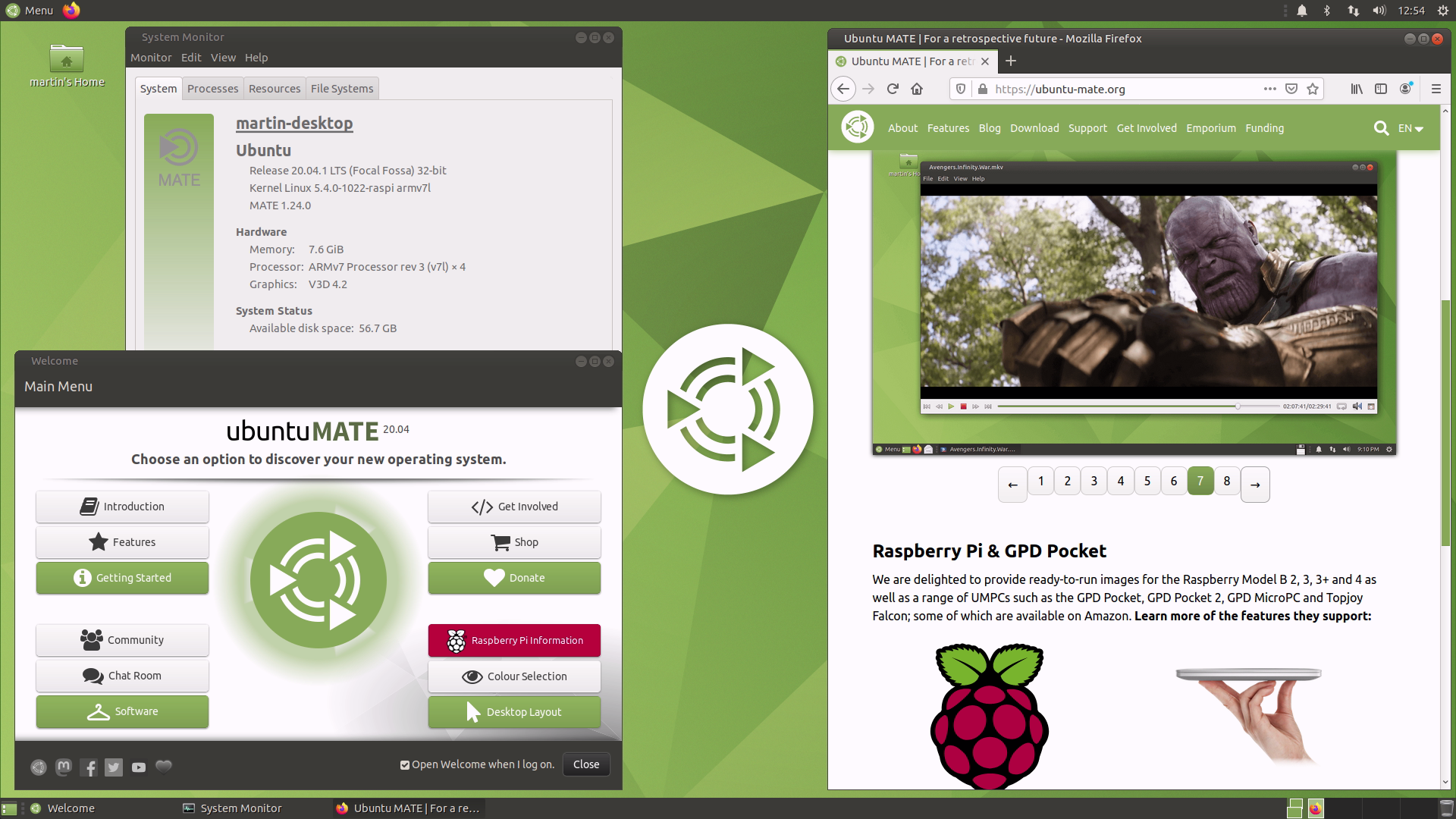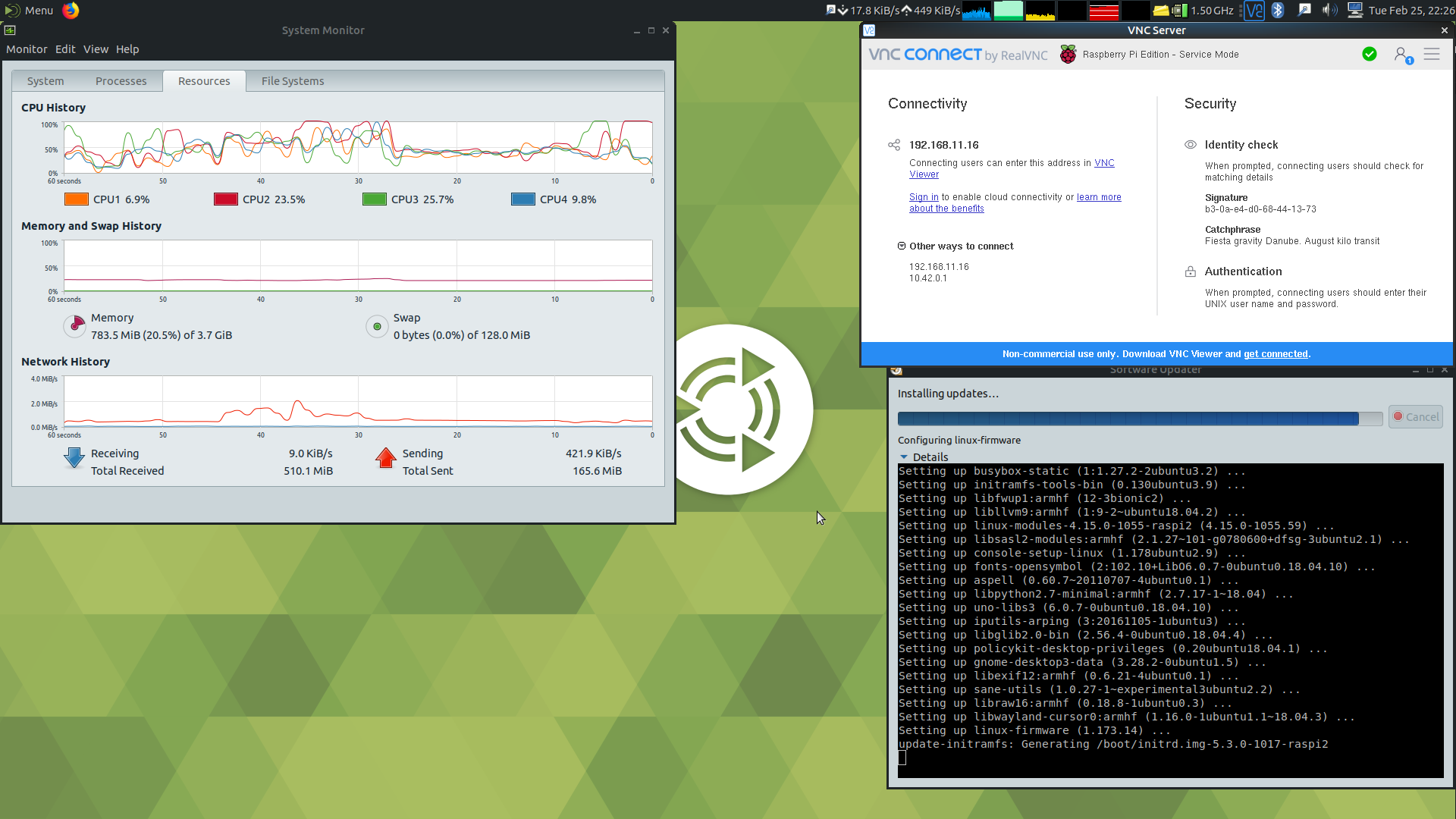RemoteIoT monitoring SSH download Raspberry Pi Ubuntu is a powerful combination for managing IoT devices efficiently. Whether you're a developer, system administrator, or tech enthusiast, understanding how to integrate these tools can significantly enhance your workflow. RemoteIoT offers a secure platform for monitoring and managing IoT devices, while SSH (Secure Shell) provides a reliable way to access your Raspberry Pi running Ubuntu remotely. This setup not only ensures secure communication but also empowers you to troubleshoot, deploy updates, and manage configurations from anywhere in the world.
In today’s fast-paced tech environment, remote access to IoT devices is no longer optional but essential. With the Raspberry Pi’s versatility and Ubuntu’s robustness, you can create a seamless IoT ecosystem. By leveraging RemoteIoT’s monitoring tools, you can keep track of device performance, network health, and security metrics in real time. This trifecta of technologies enables you to stay ahead of potential issues, ensuring your IoT infrastructure remains stable and efficient.
Setting up RemoteIoT monitoring with SSH on a Raspberry Pi running Ubuntu may sound complex, but it’s easier than you think. With the right guidance, you can download and configure the necessary tools to create a secure, scalable, and efficient remote management system. This article will walk you through every step, from installation to optimization, ensuring you can harness the full potential of your IoT devices. Let’s dive in and explore how you can make the most of RemoteIoT, SSH, Raspberry Pi, and Ubuntu together.
Read also:Is Cedric The Entertainer Still Alive Everything You Need To Know
Table of Contents
- What is RemoteIoT Monitoring and Why is it Important?
- How to Set Up SSH on Raspberry Pi Ubuntu?
- Why Should You Use RemoteIoT Monitoring for Your IoT Devices?
- Step-by-Step Guide to Downloading RemoteIoT Monitoring Tools
- How to Optimize SSH for Secure Remote Access?
- What Are the Best Practices for Raspberry Pi Ubuntu Management?
- How Can You Troubleshoot Common Issues with RemoteIoT and SSH?
- Frequently Asked Questions About RemoteIoT Monitoring SSH Download Raspberry Pi Ubuntu
What is RemoteIoT Monitoring and Why is it Important?
RemoteIoT monitoring is a cutting-edge solution designed to provide real-time insights into the performance and health of IoT devices. It allows users to track metrics such as CPU usage, memory consumption, network activity, and device connectivity from a centralized dashboard. This capability is particularly important for organizations managing multiple IoT devices across various locations. By using RemoteIoT monitoring, you can ensure that your devices are functioning optimally and address any anomalies before they escalate into major issues.
One of the standout features of RemoteIoT monitoring is its ability to integrate seamlessly with other tools, such as SSH and Raspberry Pi. For instance, SSH enables secure remote access to your Raspberry Pi running Ubuntu, allowing you to execute commands and manage configurations without physical access to the device. This integration not only enhances convenience but also improves security by encrypting data transmitted between your local machine and the IoT device.
Key Benefits of RemoteIoT Monitoring
- Real-Time Alerts: Receive instant notifications about device performance issues or security breaches.
- Centralized Control: Manage multiple IoT devices from a single platform, reducing complexity and saving time.
- Scalability: Easily scale your IoT infrastructure as your needs grow without compromising performance.
Why Choose RemoteIoT Over Other Monitoring Tools?
While there are several monitoring tools available, RemoteIoT stands out due to its user-friendly interface, robust security features, and compatibility with popular platforms like Raspberry Pi and Ubuntu. Its ability to provide granular insights into device performance makes it an ideal choice for both beginners and advanced users. Additionally, RemoteIoT’s cloud-based architecture ensures that your data is always accessible, regardless of your location.
How to Set Up SSH on Raspberry Pi Ubuntu?
Setting up SSH on a Raspberry Pi running Ubuntu is a straightforward process, but it requires careful attention to detail to ensure security and functionality. SSH allows you to remotely access your Raspberry Pi’s command line, making it easier to manage files, install software, and troubleshoot issues. Below is a step-by-step guide to help you configure SSH for your IoT device.
Step 1: Enable SSH on Raspberry Pi
By default, SSH may not be enabled on your Raspberry Pi. To activate it, follow these steps:
- Open the terminal on your Raspberry Pi or connect via a monitor and keyboard.
- Run the command
sudo raspi-configto access the configuration menu. - Navigate to Interfacing Options and select SSH.
- Choose Yes to enable SSH and exit the configuration tool.
Step 2: Secure Your SSH Connection
Once SSH is enabled, it’s crucial to secure your connection to prevent unauthorized access. Here are some best practices:
Read also:Unleashing The Legend Understanding Chuck Norris Power Level
- Change the Default Password: Use a strong, unique password for your Raspberry Pi.
- Disable Password Authentication: Enable key-based authentication for added security.
- Update Firewall Rules: Restrict SSH access to specific IP addresses using a firewall.
Generating SSH Keys for Authentication
To set up key-based authentication, you’ll need to generate an SSH key pair on your local machine. Use the following commands:
- Run
ssh-keygen -t rsa -b 4096to create a new key pair. - Copy the public key to your Raspberry Pi using
ssh-copy-id username@raspberrypi_ip. - Test the connection by logging in with
ssh username@raspberrypi_ip.
Why Should You Use RemoteIoT Monitoring for Your IoT Devices?
RemoteIoT monitoring offers a host of advantages that make it indispensable for managing IoT devices. From real-time analytics to proactive issue resolution, this platform provides everything you need to maintain a robust IoT infrastructure. Let’s explore some of the key reasons why RemoteIoT monitoring is a game-changer for IoT device management.
Proactive Issue Detection and Resolution
One of the most significant benefits of RemoteIoT monitoring is its ability to detect issues before they impact your operations. By continuously monitoring device metrics, the platform can identify anomalies such as high CPU usage, memory leaks, or network bottlenecks. This proactive approach allows you to address potential problems before they escalate, minimizing downtime and ensuring smooth operations.
Enhanced Security Features
Security is a top priority for any IoT deployment, and RemoteIoT monitoring excels in this area. The platform provides end-to-end encryption for data transmission, ensuring that sensitive information remains protected. Additionally, it offers features like two-factor authentication and IP whitelisting to further enhance security.
Customizable Alerts and Notifications
RemoteIoT monitoring allows you to customize alerts based on specific thresholds or conditions. For example, you can set up notifications for when CPU usage exceeds 80% or when a device goes offline. These alerts can be sent via email, SMS, or integrated with third-party tools like Slack for real-time communication.
Step-by-Step Guide to Downloading RemoteIoT Monitoring Tools
Downloading and installing RemoteIoT monitoring tools is a straightforward process that can be completed in a few simple steps. These tools are designed to integrate seamlessly with your Raspberry Pi running Ubuntu, providing a comprehensive solution for managing IoT devices. Below is a detailed guide to help you get started.
Step 1: Visit the RemoteIoT Website
The first step is to visit the official RemoteIoT website and navigate to the downloads section. Here, you’ll find the latest version of the monitoring tools compatible with Raspberry Pi and Ubuntu. Ensure that you download the correct version to avoid compatibility issues.
Step 2: Install the Monitoring Tools
Once the download is complete, follow these steps to install the tools:
- Open the terminal on your Raspberry Pi.
- Navigate to the directory where the downloaded file is located.
- Run the installation command, such as
sudo dpkg -i remotelot-monitoring-tool.deb. - Follow the on-screen instructions to complete the installation.
Configuring the Monitoring Tools
After installation, you’ll need to configure the monitoring tools to connect with your IoT devices. This typically involves entering your device credentials, setting up monitoring intervals, and customizing alert thresholds. The platform provides a user-friendly interface that makes this process intuitive and hassle-free.
How to Optimize SSH for Secure Remote Access?
Optimizing SSH for secure remote access is essential to protect your IoT devices from unauthorized access and cyber threats. While SSH is inherently secure, there are several additional steps you can take to enhance its security and performance. Let’s explore some best practices and advanced techniques for optimizing SSH.
Use Strong Encryption Algorithms
SSH supports various encryption algorithms, but not all of them are equally secure. To ensure maximum protection, configure your SSH server to use strong algorithms like AES-256 and SHA-2. You can specify these preferences in the SSH configuration file located at /etc/ssh/sshd_config.
Limit User Access
Restricting SSH access to specific users or groups is an effective way to minimize security risks. Add the following lines to your SSH configuration file:
AllowUsers username1 username2DenyUsers unauthorized_user
Enable Two-Factor Authentication
Two-factor authentication (2FA) adds an extra layer of security by requiring users to provide a second form of verification, such as a one-time password (OTP). Tools like Google Authenticator can be integrated with SSH to implement 2FA effectively.
What Are the Best Practices for Raspberry Pi Ubuntu Management?
Managing a Raspberry Pi running Ubuntu requires a combination of technical expertise and strategic planning. By following best practices, you can ensure that your device remains secure, efficient, and reliable. Let’s explore some key strategies for effective Raspberry Pi Ubuntu management.
Regular System Updates
Keeping your system up to date is crucial for maintaining security and performance. Regularly check for updates using the sudo apt update && sudo apt upgrade command. This ensures that your Raspberry Pi has the latest patches and security fixes.
Backup Your Data
Data loss can be catastrophic, especially in IoT deployments. Use tools like rsync or cloud-based solutions to create regular backups of your important files and configurations. This ensures that you can quickly recover in case of hardware failure or other issues.
Monitor Resource Usage
Use tools like htop or glances to monitor CPU, memory, and disk usage in real time. This helps you identify bottlenecks and optimize resource allocation for better performance.
How Can You Troubleshoot Common Issues with RemoteIoT and SSH?
Even with the best setup, you may encounter issues with RemoteIoT monitoring or SSH. Troubleshooting these problems requires a systematic approach to identify and resolve the root cause. Below are some common issues and their solutions.
SSH Connection Refused
If you’re unable to connect to your Raspberry Pi via SSH, check the following:
- Ensure that

